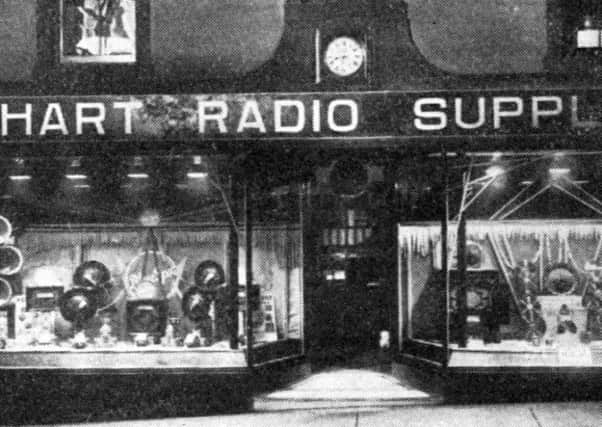Falkirk and the birth of television


A close second are the famous folk who set foot in our part of the world even for a brief encounter with the locals.
Rabbie Burns passed one night in the Crosskeys in 1787 but that didn’t stop us putting up plaques and celebrating as enthusiastically as if he had been born in Dunrowan! Mary Queen of Scots and Bonnie Prince Charlie came calling and we haven’t stopped talking about it since.
Advertisement
Hide AdAdvertisement
Hide AdIf Mr W E Gladstone had stepped out of the train at the High Station to use the toilet in 1880 I’d probably be going round giving talks about how he was really a Falkirk ‘bairn’ at heart!
However, despite this determination to grab a bit of celebrity gold dust I think we still occasionally miss a trick. One example is surely John Logie Baird, one of the most famous and influential Scotsmen of the 20th century. We do have a blue plaque but that hardly does justice to one whose Falkirk connections and activities were a major part of his story.
Baird’s great-grandfather was the tenant of Sunnyside Farm in Camelon and his grandfather farmed at nearby Sunnybrae. Had his father decided to follow the family business then the young John Logie Baird might well have been a ‘mariner’ but John senior chose the ministry and was called to the West Church in Helensburgh. It was in the Manse there on August 13, 1888, that the great inventor was born. As he grew up we can be fairly sure that Falkirk, and his grandparents’ farm, was a regular port of call and so we should not be surprised to find him at a much later date working in the town on his most famous project.
In the early 1920s he came into contact with John Hart the owner of a radio supply shop in Falkirk. Hart was a highly talented electrical engineer with special knowledge of radio transmission so the pair had much in common.
Advertisement
Hide AdAdvertisement
Hide AdIt seems that Baird came to Falkirk and worked with Hart in his workshop in the Pleasance and it may have been during this time that the first public demonstration of television took place. I say ‘may’ because much of what Baird did is shrouded in mystery and there is not all that much evidence to support our claim. Baird’s biographers are in agreement that London’s Soho was the real venue in January 1926. However, it seems unlikely that this would have been his first attempt.
The Falkirk claim was made by the late George Shaw, a celebrated pattern maker of Larbert, who said that in late 1925 he was sent by his teacher from the Science and Art School to see a ‘scientific’ demonstration in the Temperance Café in the High Street. During the evening Baird invited him to be the subject of an experiment and that his image was sent to a receiver in another part of the building.
When Hart visited Baird in London in 1926 he was given a piece of apparatus with instructions to place it in a Scottish Museum. Known as the Falkirk ‘televisor’ it was probably a prototype of the machine used in London.
John Hart moved to premises at the east end of the High Street where the machine was displayed in his window.
It is now a treasured possession of Falkirk Museum and a tangible link to one of the great technological advances of all time.